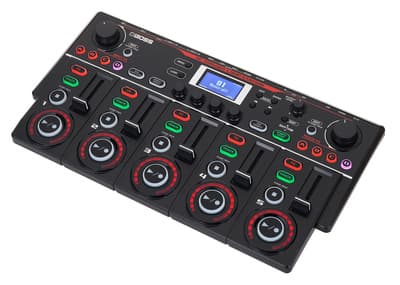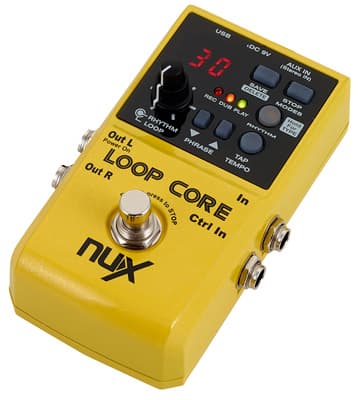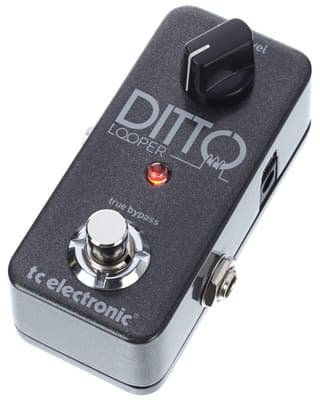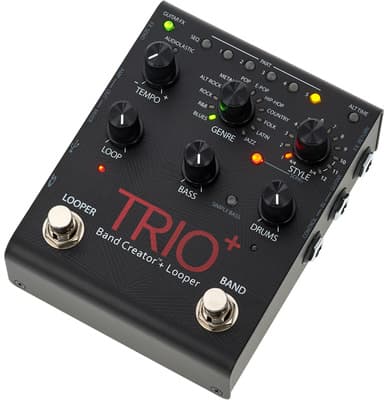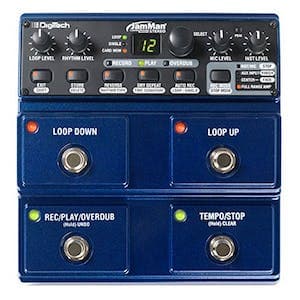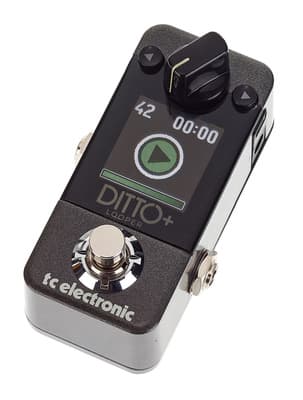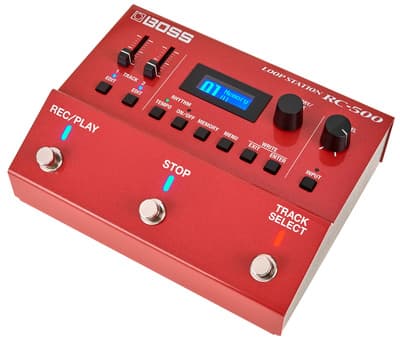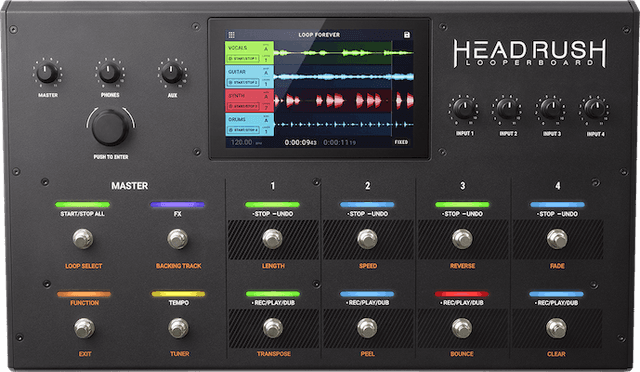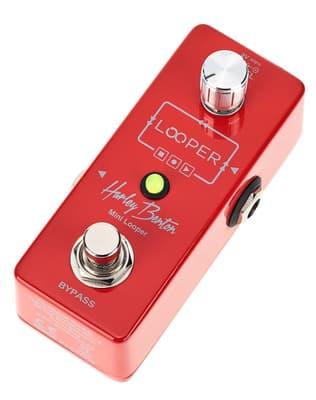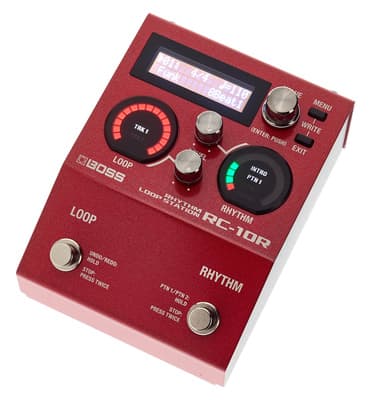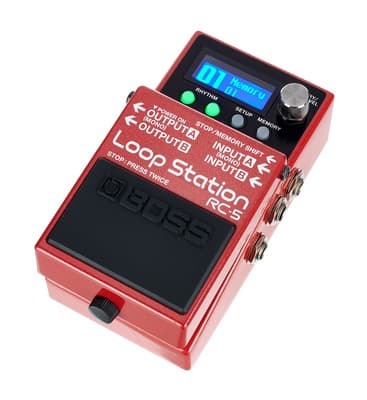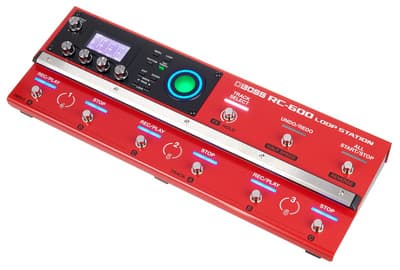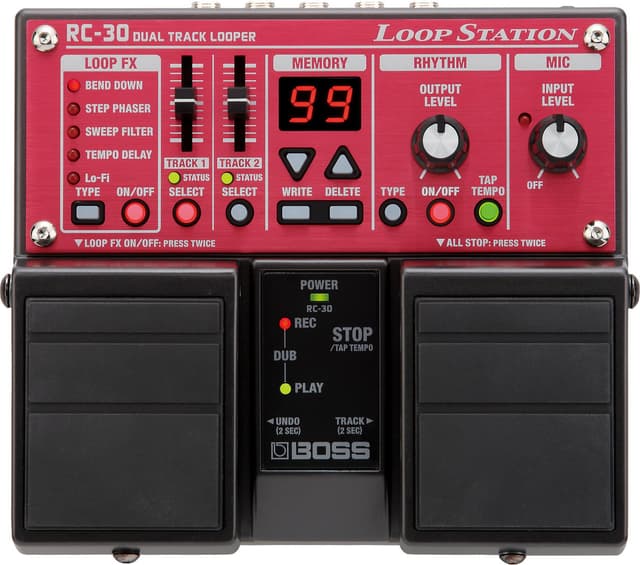Loop Station Software
A Good Alternative To Hardware Loopers?
So far, the main focus of our website has been on hardware loop stations. In the era of omnipresent digitalization, however, the existence of a wide range of software for musicians that could possibly replace conventional loopers comes as no surprise. In this guide, we will take a look at loop station software currently available on the market.
Why Looper Software Might Be the Right Choice for You
First of all, if you're a guitarist or bassist, you're probably wondering why a loop software for PC or Mac might be more useful instead of a dedicated loop station device. As a singer or beatboxer, you may be having similar thoughts. The main reasons for using a looper software are as follows:
Costs: Loop software in decent quality for PC or Mac is sometimes even available for free. A hardware Loop Station is an investment that looping beginners may shy away from. Of course, there are more or less affordable devices for guitarists, but they are often much less flexible.
Versatility: Loop Station software often comes in the form of a plug-in for digital audio workstations (DAWs). A DAW offers you countless possibilities to adapt your sound to your needs and to combine different plug-ins. With regards to flexibility, hardware loopers most of the times can't keep up, and if they do, they tend to be high-priced Loop Stations that can be controlled for example via MIDI and can be integrated into a more complex setup.
More resources: A loop software for PC is not as limited as a hardware looper. For example, the amount of recorded overdubs and the time span of your loops created with a Loop Station software depends solely on how much memory and RAM your PC has and what load the CPU can handle. All these resources of a PC are naturally in a much higher quantity than of a hardware looper.
One reason why many guitarists have kept their hands off software solutions in the past is without a doubt the sound quality. While it has been possible for many years to digitally simulate many other instruments such as pianos with great success, the situation for guitarists was rather poor. However, the quality of guitar plug-ins for music software has made massive jumps since then, even if purists and sound perfectionists probably still prefer to rely exclusively on their tried-and-tested pedals.
Luckily, the question of how much or little software you would like to use as a guitarist is not an either-or decision, as you can easily combine hardware with software solutions. In other words, just because you're using looper software doesn't mean you can't use your analogue effects units.
But to be fair, the following should not go unmentioned: Unfortunately, you still won't get very far without any hardware, because you most likely don't own a PC or laptop you can connect with guitar. To do so, you need an audio interface acting as an intermediary to the PC to which you connect your guitar.
How this really works would go beyond the scope of this article. So, here's a little trick: If you already own a multi-effects unit for your guitar with a USB port, it's very likely an USB audio interface that will allow you to record directly into the DAW of your choice.
Commercial Loop Station Software
Even though there are some free solutions when it comes to looper software, sometimes it makes sense to invest a little bit of money in a professional software. This type of software is usually not a separate looping software you can download to your PC, but a complete digital audio workstation working as a host for running (mostly free) VST plug-ins. In this section, we'll take a look at two well-known DAWs and explain their capacity when it comes to looping.
Ableton Live
By now, Ableton is certainly a household name for many musicians, and rightly so. The Berlin based music software manufacturer has been around for decades and is one of the three biggest developers of sequencer software for professional musicians in the world. Ableton's top seller is Ableton Live, a sequencer or DAW primarily used by DJs and music producers that is currently available in version 12. But Ableton Live is also used on more and more stages for live feeds, like half-playbacks.
Ableton had added numerous features with the update of their last version of the software, Ableton Live 11, making the app more interesting for guitarists and bassists. As Ableton Live includes a looper there is no need for any extra plug-ins to be used as a Loop Station software.
At the moment, to download Ableton Live 12 costs around USD300 (as of August 2024). You can get a free trial on the Ableton website. The program is available for both Windows and Mac, and for the Windows version, your PC should run on Windows 10 and it needs to have a reasonably up-to-date multi-core processor (e.g. Intel Core i5 or AMD Ryzen), as well as at least 8 gigabytes of RAM. If possible, Ableton recommends 76 gigabytes of free disk space for installing additional content, with a minimum of 3 gigabytes for just installing the app. The Mac version requires the same memory and RAM, and your Mac needs to have Intel Core i5 and run on at least OS X 10.13.
Ableton Live as Loop Station Software
The Ableton Live looper is basically very similar to a looper hardware. The looper feature of the program is bundled up in its own little window within the app. The looper is categorized as an "instrument" in Ableton Live, and you can launch an instance by clicking "Audio Effect" and then "Looper" on the far left of the main screen and dragging one of the available looper versions into the grey area at the bottom centre. Here you can select loopers of different lengths, which you can adjust now or later on.
As soon as you added a looper, you can start your recording by clicking on the big play button in the looper window. Clicking the same button once again will stop the recording. To create overdubs, simply click the button once more. A coloured display above the buttons shows you the position in the loop and whether you are actively recording. During playback, this indicator is blue, during recording it is orange.
If you are not happy with an overdub, you can undo it by clicking the small "Undo" button. Directly below this button there is another button for deleting all recordings of the respective looper instance.
A particularly noteworthy feature of Ableton Live is the fact that you can also control each function via MIDI, e.g., individual looper features can be controlled via an external MIDI foot pedal* without using the mouse or keyboard.


Overall, the Ableton Live looper might seem pretty rudimentary at first glance, but a closer look reveals the many settings you can make. Recordings are automatically adapted to the beat and there is also a button for a reverse playback feature. Since the looper is treated like any other instrument, you can create multiple instances without any problems.
By the way, it is possible to import and export (your own) loops via drag and drop, moving your loop in an area of the looper labelled "Drag Me!". You can change the loop length using the two small buttons below the display; while the first one halves the length of the loop by keeping only the currently played half of the recording, the button next to it doubles the length of the loop by copying the previous recording and attaching it to the end.
We found one very handy feature of Ableton Live to be the interactive help, located at the very bottom left of the main window. This element displays contextual information about the control if you hover over it with the cursor.
If Ableton Live's looper is a bit too basic for you, but you enjoy the rest of the program, it is possible to use a separate looper plug-in, a few of which will be briefly introduced later on in this article. To learn how to install a VST plug-in in Ableton Live, check out this support article by Ableton.
Image-Line FL Studio
Source: https://www.elevator.de/image-line-fl-studio-20-producer-edition-box-version.html
FL Studio, formerly known as 'FruityLoops', is an audio and MIDI sequencer and digital audio workstation, similar to Ableton Live. The program is available for Windows and Mac and can be used for recording loops.
The 'Studio Producer Edition'* by FL Studio is currently (as of March 2022) available for around $170 to $200. One of the pleasant aspects of downloading FL Studio is that, according to the producer, once the full version has been purchased, coming updates are free of charge for life. In addition to the desktop version, there is a slimmed-down mobile version of FL Studio for iOS and Android available for a fraction of the price of its big brother.
As you would expect from a DAW, FL Studio is also a VST plug-in host, meaning you can extend it with instruments and effects via a variety of free and commercial plug-ins. FL Studio's system requirements are slightly lower than Ableton Live's, as it works on Windows 7 and gets by with 4 gigabytes of RAM.
There's a couple of ways to create loops with FL Studio. One of the best options for recording instruments is the included Edison plug-in. How to use the Edison plug-in, you can learn on the help page. Unfortunately, the handling has not much in common with hardware loopers, that's why integrating one of the VST plug-ins mentioned later in this article could be a good alternative.
Augustus Loop
Augustus Loop is a digital magnetic tape delay effect and looper in the form of a VST plug-in. At first, the Augustus Loop interface might seem a bit complicated, but after a short time of getting to know the software it is relatively easy to use. Augustus Loop is available for Windows and Mac and costs $50 (as of March 2021).
We like the fact that Augustus Loop is a VST plug-in providing the option of being integrated into digital audio workstations. The program offers a wide range of settings, but most of them are part of the delay feature. For anybody who's interested, there is a demo version of the software on the Augustus Loop website, in case you'd rather get a first impression before buying.
 Source: https://www.expert-sleepers.co.uk/augustusloop.html
Source: https://www.expert-sleepers.co.uk/augustusloop.html
Free Loop Software for PC
Apart from the DAW heavyweights with looper features, there is a number of free looper VST plugins and standalone Loop Station software. Here is a small overview of free looper software for PC that we liked a lot.
SooperLooper
SooperLooper is a free client for the JACK audio system and as such can be used on platforms with JACK support, namely Linux and OS X. You can download SooperLooper for free, and even though it might look somewhat cluttered, the user interface with its big buttons for "Record", "Overdub" and "Undo" is easy to understand.
What we like most about SooperLooper is the incredible amount of settings it offers, even though it's completely free.
 Source: http://essej.net/sooperlooper
Source: http://essej.net/sooperlooper
Mobius
Mobius is a Loop Station software for Windows and Mac, and you can use it either as a standalone app or as a VST plug-in allowing integration into a DAW such as Ableton Live, FL Studio, Cubase or Logic Pro. Mobius is free and, thanks to its support for Windows XP upwards, still runs on any old milk can, to put it bluntly.
With Mobius you can easily create loops using the dedicated buttons for "Record", "Overdub" and "Undo". The program also offers a big assortment of setting options.
 Source: https://www.matrixsynth.com/2006/10/mobius-free-software-looper.html
Source: https://www.matrixsynth.com/2006/10/mobius-free-software-looper.html
The Mobius interface takes a bit of getting used to, but we especially like the fact that this loop software for PC and Mac can be used both as a program and as a VST plug-in - and it's completely free.
Conclusion
There's is a wide selection of Loop Station software, both commercial and free, available today. If you already use a DAW you trust, then there is a whole world of looper software at your disposal via VST plugins, so to speak, since most looper software is available in the form of these plug-ins. But even outside of sophisticated plug-ins, there are some great standalone apps that will satisfy your looper ambitions.

